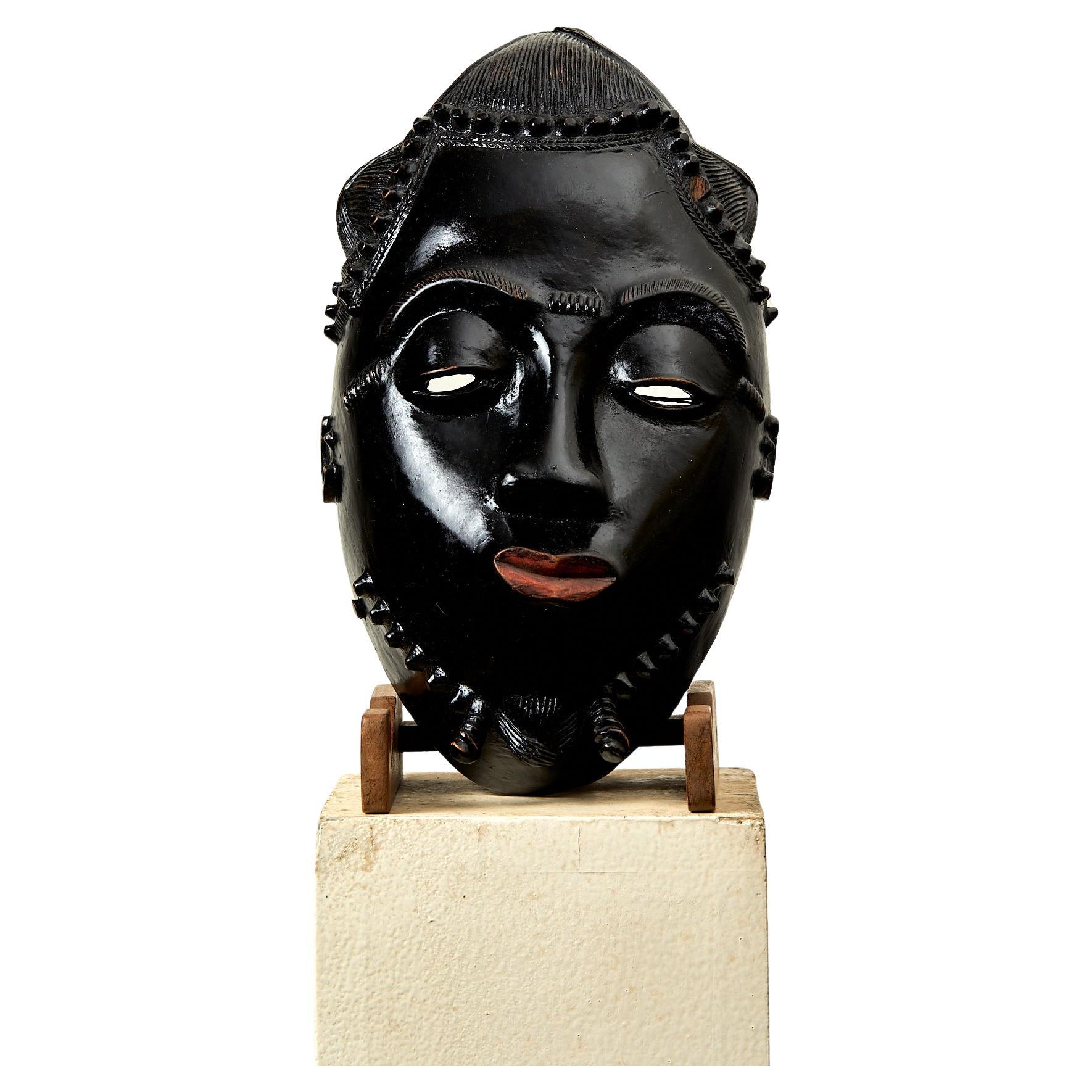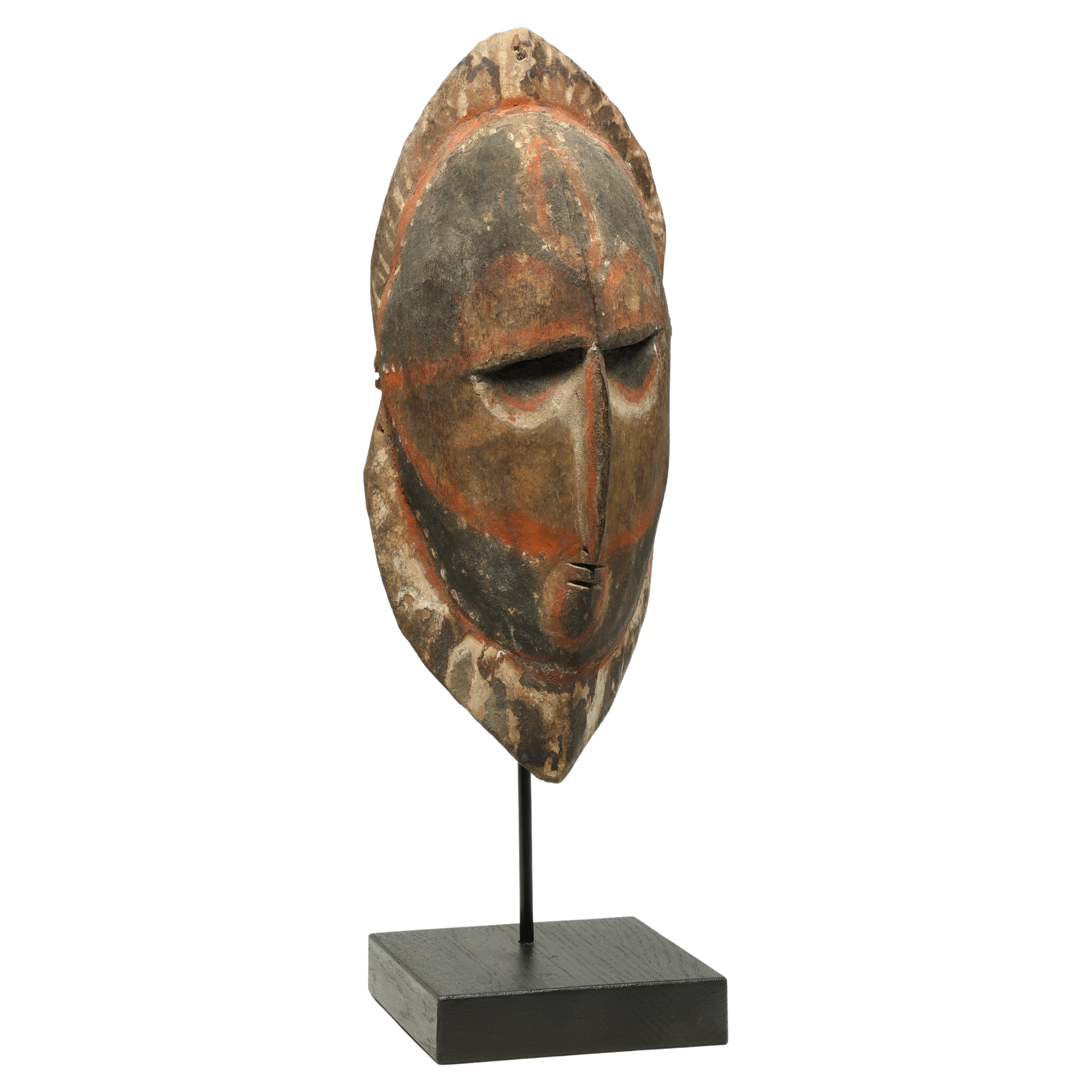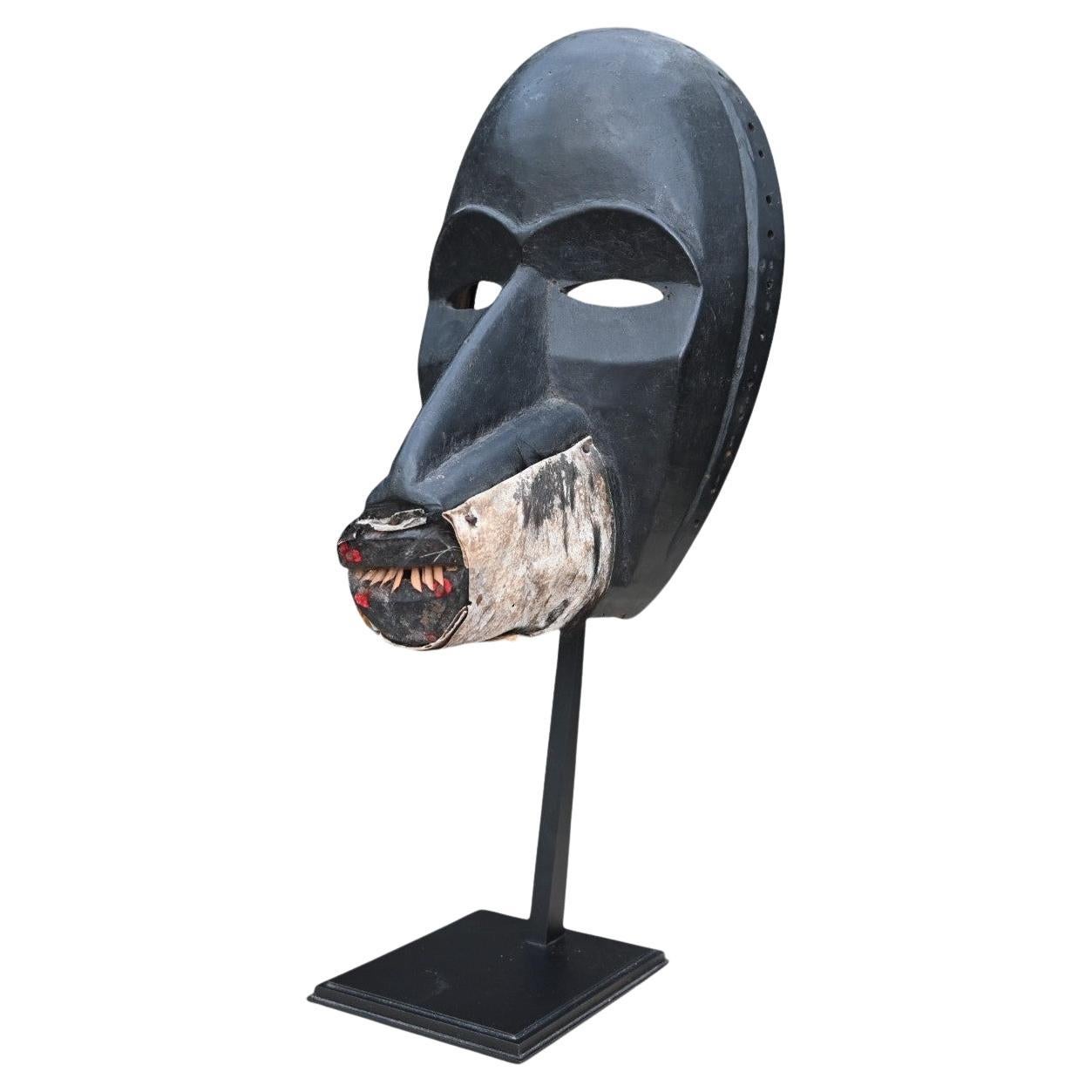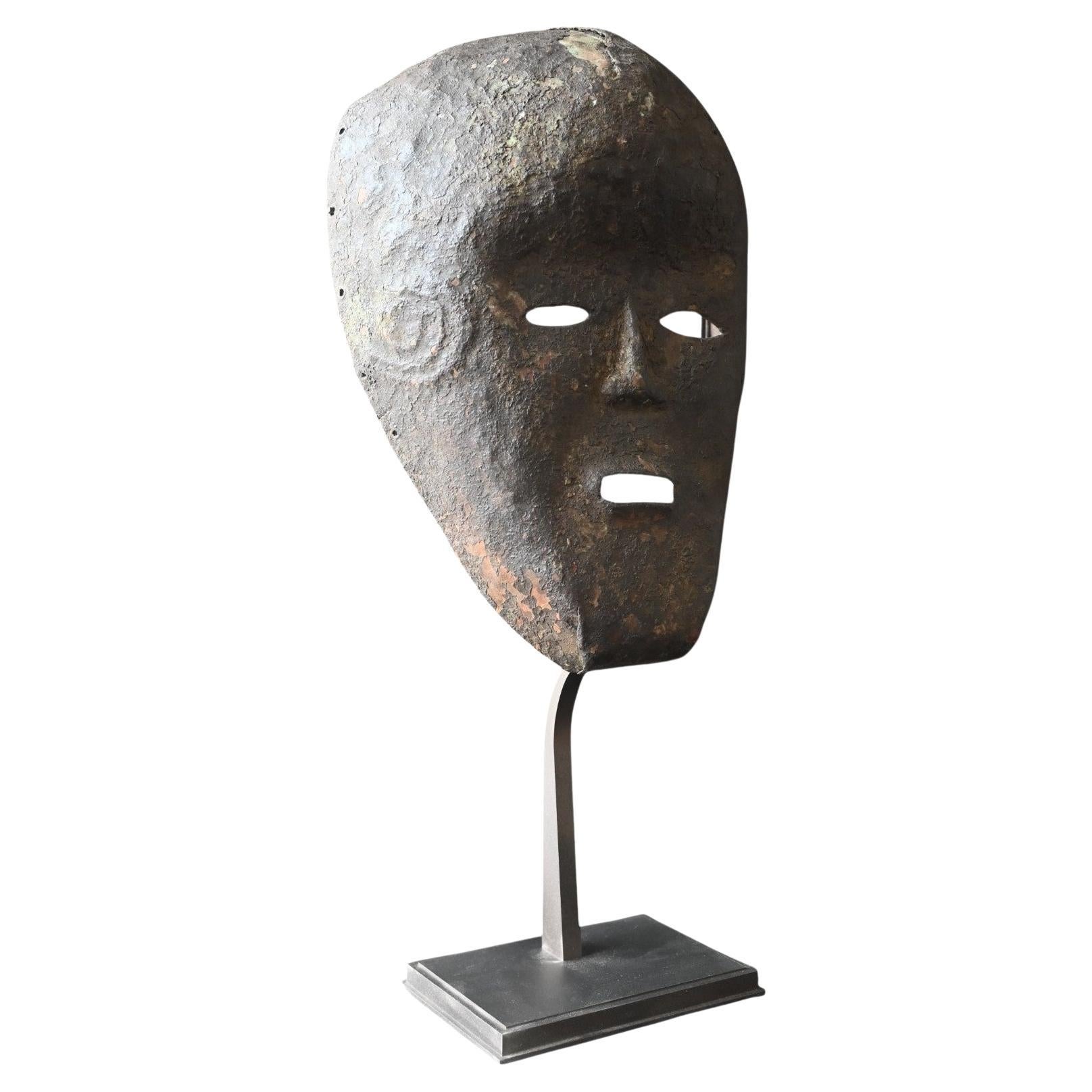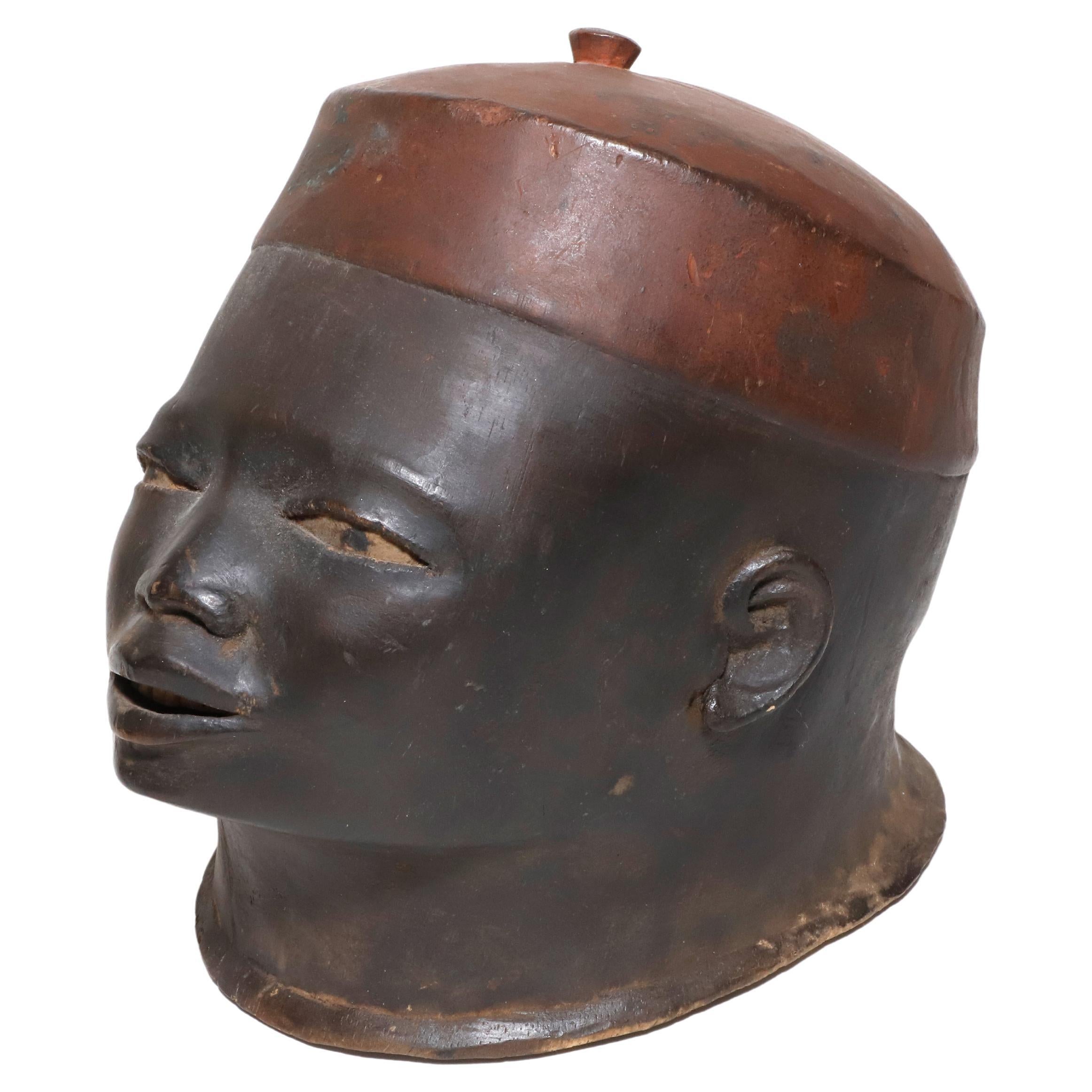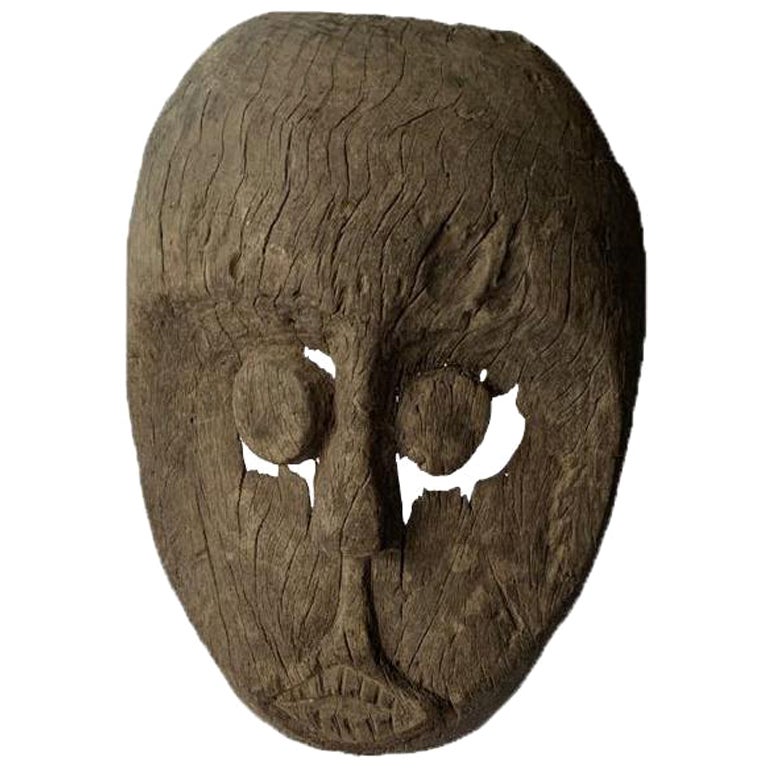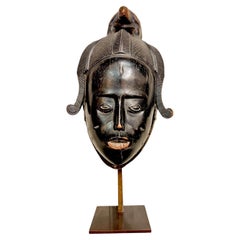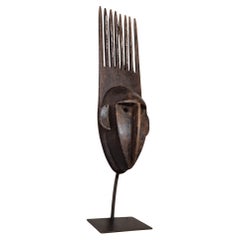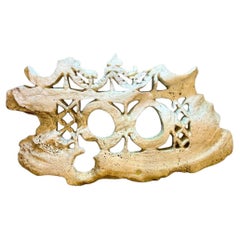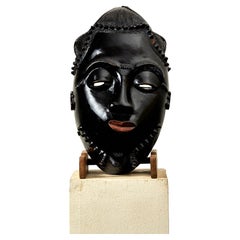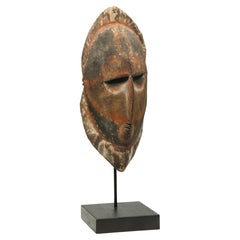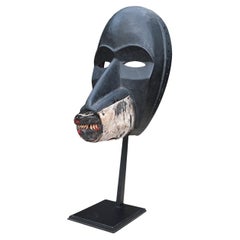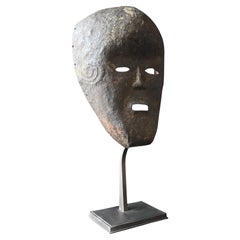Items Similar to Tchokwé mask from Angola in wood and pigments - Circa 1900
Video Loading
Want more images or videos?
Request additional images or videos from the seller
1 of 13
Tchokwé mask from Angola in wood and pigments - Circa 1900
About the Item
Tchokwé mask from Angola once owned by the American Abstract Expressionist artist Merton D. Simpson (1928 - 2013) renowned both for his work and as a dealer and collector of early African art.
The Tchokwe (or Tschokwe or Chokwe) are a people of Central and Southern Africa, mainly found in the Democratic Republic of Congo and Angola.
This “Cihongo” mask is the masculine version of the feminine “Mwana Pwo” mask. It boasts an exceptional typology worthy of the finest museum pieces, with a finesse of execution and a red iron oxide patina of the finest style: the large, rounded, unobstructed forehead, marked with the cross of Saint Andrew, the left ear adorned with a metal buckle, the half-closed eyes imprinted with kaolin and the scarifications under the eyes that actually illustrate tears, the shape of the nose, the mouth with blunt teeth set off on a platform. It's hardly surprising that American collector Merton D. Simpson wanted to acquire it to complete his collection.
The Cihongo embodies the representation of a male spirit symbolizing power and wealth. It is the spirit of a notable who must bring prosperity to the village and dispense justice. In the past, only the chief or the chief's son could wear the Cihongo. These masks are topped by a fan-shaped headdress adorned with feathers. During ceremonies, this mask was worn over the costumes or the initiation headdress, and the dancer of noble blood wore rattles to set the rhythm of his dance. His costume consisted of a knitted raffia jumpsuit with long sleeves and tights. Over this, a fiber skirt gave rhythm to his movements. The dancers went from village to village, and were paid for the beneficial influence of their performances.
- Dimensions:Height: 9.06 in (23 cm)Width: 5.52 in (14 cm)Depth: 6.11 in (15.5 cm)Seat Height: 13 in (33 cm)
- Style:Tribal (In the Style Of)
- Materials and Techniques:
- Place of Origin:
- Period:
- Date of Manufacture:circa 1900
- Condition:Wear consistent with age and use. The patinated brass and wooden base has been made on dimension. The mask measures 33 cm high on his base.
- Seller Location:NICE, FR
- Reference Number:1stDibs: LU9202242178652
About the Seller
5.0
Gold Seller
Premium sellers maintaining a 4.3+ rating and 24-hour response times
Established in 2003
1stDibs seller since 2023
26 sales on 1stDibs
Typical response time: 3 hours
- ShippingRetrieving quote...Shipping from: NICE, France
- Return Policy
Authenticity Guarantee
In the unlikely event there’s an issue with an item’s authenticity, contact us within 1 year for a full refund. DetailsMoney-Back Guarantee
If your item is not as described, is damaged in transit, or does not arrive, contact us within 7 days for a full refund. Details24-Hour Cancellation
You have a 24-hour grace period in which to reconsider your purchase, with no questions asked.Vetted Professional Sellers
Our world-class sellers must adhere to strict standards for service and quality, maintaining the integrity of our listings.Price-Match Guarantee
If you find that a seller listed the same item for a lower price elsewhere, we’ll match it.Trusted Global Delivery
Our best-in-class carrier network provides specialized shipping options worldwide, including custom delivery.More From This Seller
View AllNdoma Baule Portrait Mask, Ivory Coast, Wood, lacquered patina, Circa 1930
Located in NICE, FR
"Ndoma” Baule Portrait Mask, Ivory Coast, Circa 1930 Wood, heavy wood with deep brown-black lacquered patina.
A superb old hardwood dance mask featuring an ...
Category
Vintage 1930s Tribal Tribal Art
Materials
Wood
Bamana N'tomo mask, Mali, 20th century
Located in NICE, FR
Bamana N'tomo mask, Mali, 20th century
"Generally surmounted by three to eight horns forming a comb, the N'tomoface mask refers to a moment of compulsory education given to uncircumcised young boys in certain West African societies. The mask's discreet, even absent, mouth emphasizes the behavior expected of them in their future adult life after training: controlling and measuring their words, knowing how to keep quiet, preserving secrets and enduring pain in silence."
Excerpt from Masques du N'tomo, Marc Ladreit de Lacharrière Collection, Musée du Quai Branly Jacques Chirac, France.
The Bambara, or Bamana, live in central and southern Mali. Their name means “unbeliever” and was given to them by the Muslims. Animists, they believe in the existence of a creator god called Ngala, who maintains the order of the universe and coexists with another androgynous god called Faro, master of the Word, who gave all qualities to mankind and makes the fruits of the earth grow. Traditional Bamana art objects are closely linked to agrarian rites.
The Bamana dance these masks during initiation and circumcision ceremonies for young boys in the Ntomo society. The face, with its vertical outgrowths at the top, adopts geometric features beneath a rounded forehead, including an imposing busted nose, as the Bamana favor this organ in their statuary as it evokes sociability and clan cohesion. Indeed, during choreography, the dancer frequently touches the nose of the mask.
As teaching aids for candidates, masks from societies accessible to young boys and adults, such as the N'tomo, Korè and Ci wara...
Category
Vintage 1930s Malian Tribal Tribal Art
Materials
Wood
Ciwara Bambara headdress in carved wood and basketry, Mali, Early 20th century
Located in NICE, FR
A very pleasing Ciwara crest, singularly small and accompanied by its original headdress, depicting a stylized antelope leaning on a pangolin. The antelope is ridden by a woman, and white horsehair has been added to the tips of the horns. The piece is carefully sculpted, with notches decorating the bodies of the antelope and the pangolin.
Rattan, plant fiber, cowries, wood Very fine velvety mat patina, Circa 1950
An animal called Ciwara is said to have taught the Bambara how to cultivate the land, and during agrarian ceremonies, they recall the myth through the stylized representation of an antelope whose name ci wara...
Category
Early 20th Century Malian Tribal Tribal Art
Materials
Wood
Shell Plaque (Barava) from Solomon Islands, 19th Century
Located in NICE, FR
Objects crafted from the shell of the giant Tridacna clam, also known as the fossilized giant clam, held great value among numerous Melanesian peoples. The artistry of working with f...
Category
Antique 19th Century Solomon Islands Tribal Tribal Art
Materials
Shell
Nigerian 19th Century Gold and bronze trade currency Bracelet
Located in NICE, FR
We present you an 19th century antique Nigerian high quality bronze GOLD PLATED bracelet currency traditionally used in monetary functions ...
Category
Antique 19th Century African Tribal Tribal Art
Materials
Bronze, Gold Plate
Collection of Kriss Handles, Java, Indonesia, Late 18th / Early 19th Century
Located in NICE, FR
A set of thirteen kriss handles originating from Java, Indonesia, dating from the late 18th to early 19th century.
Beautiful aged patina in dark or amber tones. Exquisite carving wo...
Category
Antique 1790s Indonesian Tribal Tribal Art
Materials
Wood
You May Also Like
Baoulé portrait mask, carved wood, lacquer and pigments, circa 1940, Africa.
Located in Nice, Cote d' Azur
Baoulé portrait mask,
carved wood, lacquer and pigments,
circa 1940, Africa.
Height 29 cm, width 17 cm, depth 14 cm.
Category
Vintage 1940s African Modern Tribal Art
Materials
Wood
Early Papua New Guinea Painted Maprik Wood Mask Curves Old Pigments
Located in Point Richmond, CA
Early Papua New Guinea painted Maprik carved hard wood mask. Mid-20th century, with wonderful curved expressive asymmetrical face. Long nose with pierced septum. Faded polychrome pig...
Category
Mid-20th Century Papua New Guinean Tribal Tribal Art
Materials
Organic Material, Wood
African Bird Mask From The Dan Tribe, Ivory Coast, early 1900
Located in Bilzen, BE
Ancient African mask from the Dan Tribe (Ivory Coast, Africa).
Beautiful patina inside and out, in good condition with traces of tribal use.
Ex. French private collection.
Ex. Dutch...
Category
Early 20th Century Ivorian Tribal Tribal Art
Materials
Wood
Genuine copper mask from the Dinga / Ding tribe DR Congo, early 1900
Located in Bilzen, BE
A genuine mask hammered in copper from the Dinga / Ding tribe from the south of DR Congo
Early 1900, but probably older
This kind of anthropomorphic masks are called "ngongo munene"...
Category
Vintage 1910s Congolese Tribal Tribal Art
Materials
Copper
Hand Carved Wooden Makonde Mask from Mozambique, Tanzania, circa 1950s
Located in New York, NY
Hand carved wooden Makonde Mask From Mozambique, Tanzania Circa 1950s. Mozambican Makonde masks represent ancestral spirits who temporarily return to earth to appear in dances that c...
Category
Mid-20th Century Mozambican Tribal Tribal Art
Materials
Wood
Hand-Carved Wood Borneo Dayak Tribe Mask, Indonesia c. 1900
Located in Jimbaran, Bali
This hand-carved wooden mask is from Central Kalimantan on the island of Borneo. It features bulging eyes and a mouth emphasised by a full set of teeth and small nose. These masks we...
Category
Early 20th Century Indonesian Other Masks
Materials
Wood
Recently Viewed
View AllMore Ways To Browse
Large Wood Cross
Cross Wood And Metal
African Feathers
African Iron Wood
Large Iron Crosses
African Costume
Congo Raffia
Antique Feather Fan
Antique Rattles
Couple Glass
Dining Table With Leather Chairs
English Craftsman
Midcentury Bar Chairs Wood
N Table
Patterned Bed
Shadow Lamps
Wood Carved Table With Marble Top
1920s Art Deco Rug
